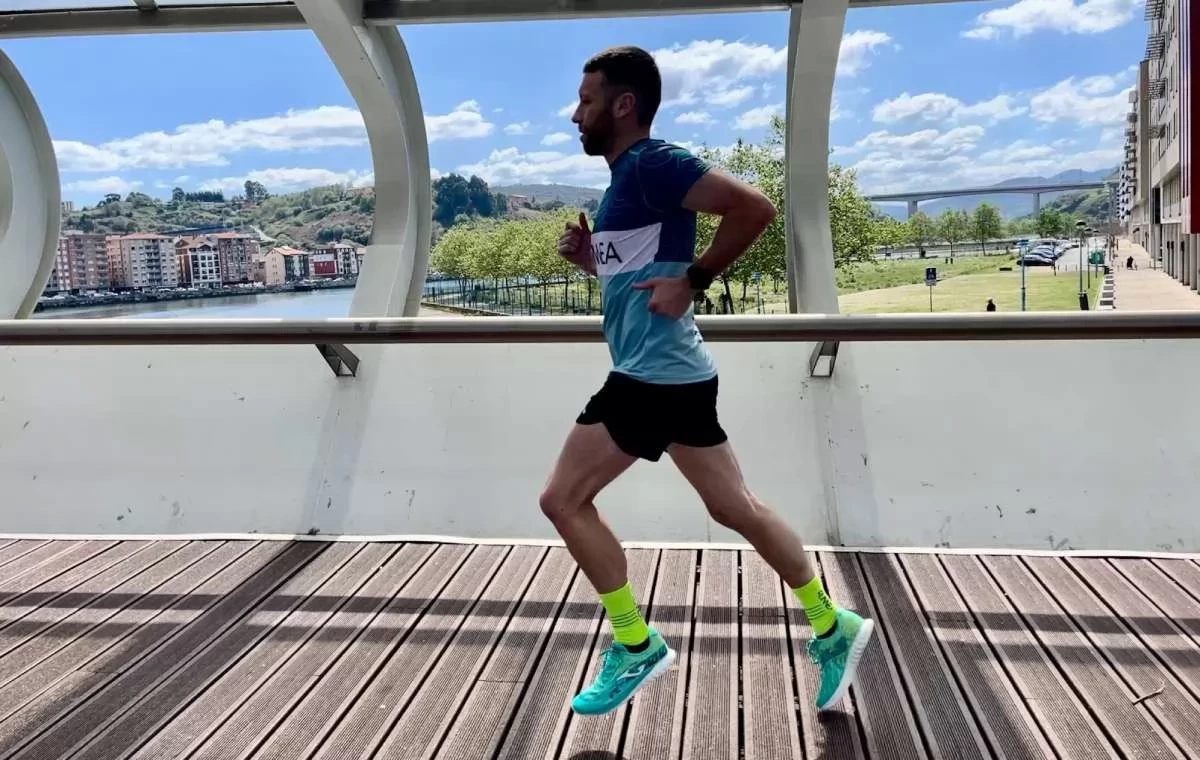Preparing for a middle or long distance race, such as a half marathon or marathon, requires careful planning and an understanding of how to structure training to maximize performance and minimize the risk of injury. From RUNNEA we want to help you understand how to plan a half or long distance training. But remember that we always recommend that you rely on professional and qualified expertise to help you prepare for your goal efficiently but also safely. Get your running shoes ready to start.
Not sure which running shoe to choose?
In a few simple steps we help you to choose the ideal running shoe for you
Go to the Shoe Finder
The importance of understanding training cycles
When throughout a training plan for a goal such as a half marathon or marathon it is important to understand that we cannot always train at the same intensity, nor the same volume. Dividing the preparation into macrocycles and microcycles helps us to avoid overtraining, possible injuries and to make the preparation for your challenge more enjoyable.
- Microcycles: These are one-week training blocks. Each microcycle should include a variety of workouts designed to work on different aspects of fitness.
For a half marathon, about 12-16 microcycles are recommended, while for a marathon, 16-24 microcycles are ideal.
- Macrocycles: These are longer periods, usually several months, comprising a series of microcycles. A complete macrocycle will include building, peaking and tapering phases.
A macrocycle for a half marathon may last 3 to 4 months, and for a marathon, 4 to 6 months. Each macrocycle includes base, building, tuning and recovery phases.
Weekly training structure
We can structure the training week as follows:
- Series or Fartlek days (2 times per week): These workouts are crucial for improving speed and endurance.
-They account for 20-30% of the weekly volume.
-They include high intensity intervals followed by recovery periods.
-Perform at 85-95% of Maximum Heart Rate (HRF).
-Examples: 6x800 meters at race pace with 2 minutes of light jogging between each interval. Intervals of 1 km at 5K pace with 3 minute recoveries. - Long Runs (1x per week): These are the cornerstone of long distance training.
-20-25% of weekly volume.
-Maintain between 60 of HRM.
-Gradually increase distance to 75-80% of race distance. Do not go to 100% of the distance.
-Help improve aerobic endurance and fuel efficiency.
-Should be done at a comfortable pace, where a conversation can be held. - Short Runs or Recovery (3 times per week): These workouts are at a lighter pace and aid in active recovery.
- 30-40% of weekly volume
- Perform at 60 of HRM.
- Sessions of 60 minutes to facilitate recovery.
- Contribute to increasing weekly volume without excessive stress. - Strength Training (2 times per week): Essential to improve running economy and prevent injury.
- 10-15% of weekly volume.
- Include strength and stability exercises, focusing on lower body and core.
- Include exercises such as squats, lunges and planks. - Rest Day (2 days per week): Fundamental to allow for physical and mental recovery.
- 5 of weekly volume
- Low impact activities or complete rest. Examples: Yoga or stretching.
Establishing workloads
To prepare for a middle or long distance race, such as a half marathon or marathon, it is crucial to properly set workloads. This involves determining the intensity, volume and frequency of training. As a general rule, it is advisable to increase training volume by 10-15% each week during the build-up phase. Every 3 weeks, include a recovery week by reducing volume by 20-25%. Adjust intensity and volume according to personal feelings and fatigue level. Here we explain in more detail how you can do this:
- Training intensity:
Intensity refers to the level of demand of each session. This can be measured in terms of maximum heart rate (MHR). For example, long runs may be performed at 60 of your MHR, while interval sessions may require working at 80-90% of your MHR.
It is important to vary the intensity throughout the week to avoid overtraining and allow for adequate recovery. - Training volume:
Volume refers to the total amount of work done, usually measured in kilometers per week.
For a half marathon, weekly volume may range from 30-50 km at the beginning of training, gradually increasing as you get closer to the race.
For a marathon, initial volumes may be 60 km per week, increasing to 70-100 km in the peak weeks. - Training frequency:
Frequency refers to how many times you train per week. For most runners, 4-6 days per week is a good starting point.
Includes a variety of workouts: long runs, interval sessions, tempo workouts and active recovery days.
Race Preparation
- In the last weeks before the race, progressively reduce the volume of training (tapering) to arrive in optimal conditions.
- Maintain the intensity of training but reduce the duration.
- Focus on proper nutrition and rest for optimal recovery.

Sample Half Marathon Training Plan3 months)
1. Base Phase
Duration: 4-6 weeks for half marathon, 6-8 weeks for marathon.
Goal: Establish a solid aerobic base, improve endurance and strengthen muscles, tendons and ligaments.
Training:
- Long runs at a gentle pace (60 of MHR).
- Strength training focused on muscular endurance.
- Inclusion of running technique and mobility sessions.
Volume: Progressive, gradually increasing the total weekly distance.
2. Building phase
Duration: 4-6 weeks.
Goal: Increase training volume and intensity to improve aerobic and anaerobic capacity.
Training:
- Incorporation of interval training and tempo runs.
- Long runs gradually increasing distance and intensity.
- Maintenance of strength training.
Volume and Intensity: Progressive increase, taking care not to overload and avoid injury.
3. Tapering Phase (Tapering)
Duration:3 weeks.
Objective: To allow the body to recover and adapt to previous training loads to maximize running performance.
Training:
- Progressive reduction in volume while maintaining intensity.
- Focus on quality over quantity.
- Inclusion of race-specific training, such as race pace drills.
Volume: Reduction of up to 50% in the last week before the race.
4. Recovery Phase
Duration: 2 weeks post-race.
Goal: Physical and mental recovery after the event.
Training:
- Low intensity activities such as walking, swimming or gentle cycling.
- Mobility and stretching exercises.
- Avoid running or high impact activities.
- Focus: Restore energy, repair muscle tissue and prepare for future training or competition.
Each phase is crucial and contributes to the overall development of the athlete, preparing them to reach their maximum potential in the target race.
Proper training planning is key to success in middle and long distance races. Combining different types of training, along with a focus on recovery and injury prevention, will help runners reach their goals effectively and safely.
Read more news about: Running Training
























